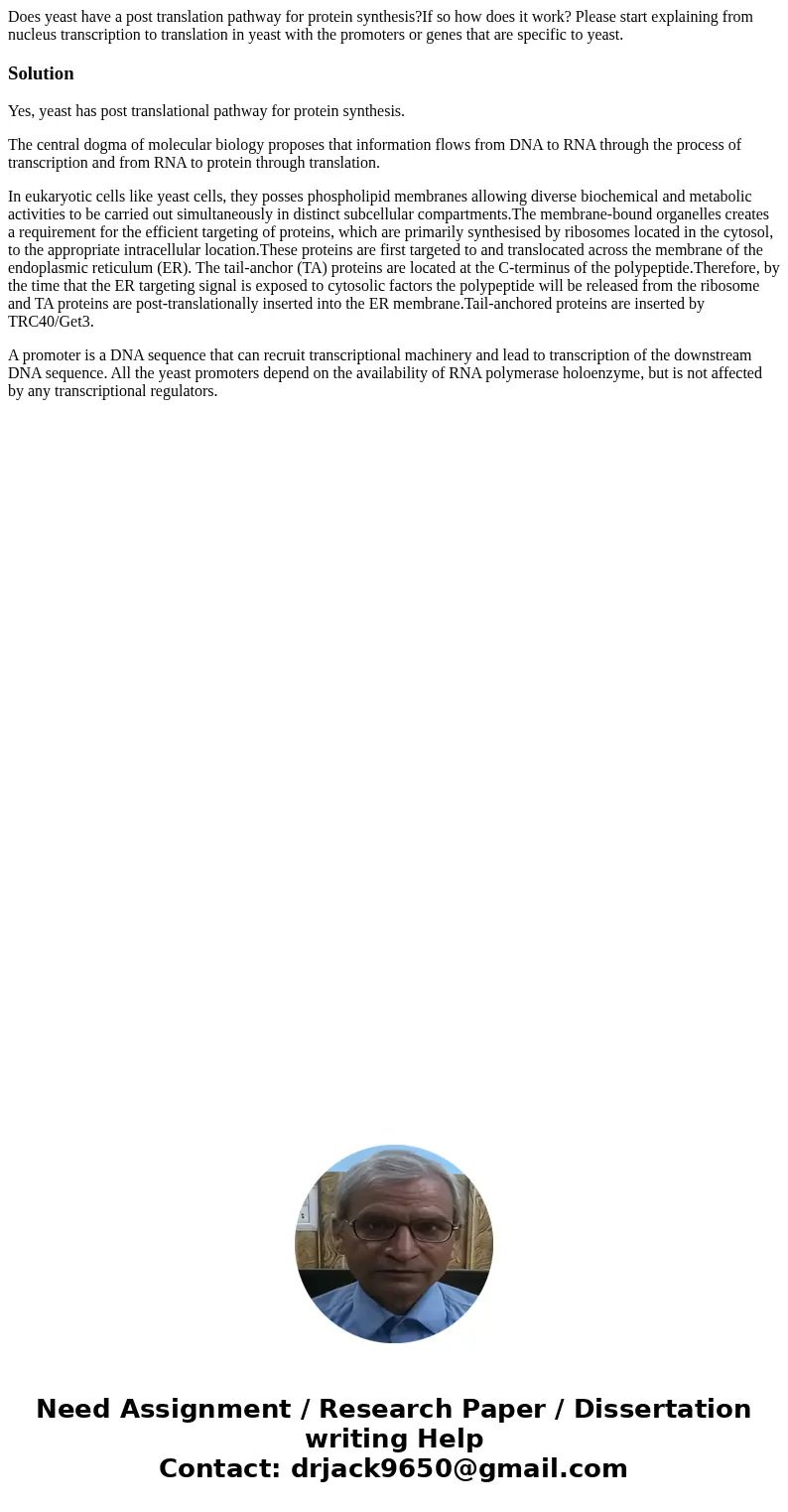Does yeast have a post translation pathway for protein synth
Does yeast have a post translation pathway for protein synthesis?If so how does it work? Please start explaining from nucleus transcription to translation in yeast with the promoters or genes that are specific to yeast.
Solution
Yes, yeast has post translational pathway for protein synthesis.
The central dogma of molecular biology proposes that information flows from DNA to RNA through the process of transcription and from RNA to protein through translation.
In eukaryotic cells like yeast cells, they posses phospholipid membranes allowing diverse biochemical and metabolic activities to be carried out simultaneously in distinct subcellular compartments.The membrane-bound organelles creates a requirement for the efficient targeting of proteins, which are primarily synthesised by ribosomes located in the cytosol, to the appropriate intracellular location.These proteins are first targeted to and translocated across the membrane of the endoplasmic reticulum (ER). The tail-anchor (TA) proteins are located at the C-terminus of the polypeptide.Therefore, by the time that the ER targeting signal is exposed to cytosolic factors the polypeptide will be released from the ribosome and TA proteins are post-translationally inserted into the ER membrane.Tail-anchored proteins are inserted by TRC40/Get3.
A promoter is a DNA sequence that can recruit transcriptional machinery and lead to transcription of the downstream DNA sequence. All the yeast promoters depend on the availability of RNA polymerase holoenzyme, but is not affected by any transcriptional regulators.

 Homework Sourse
Homework Sourse